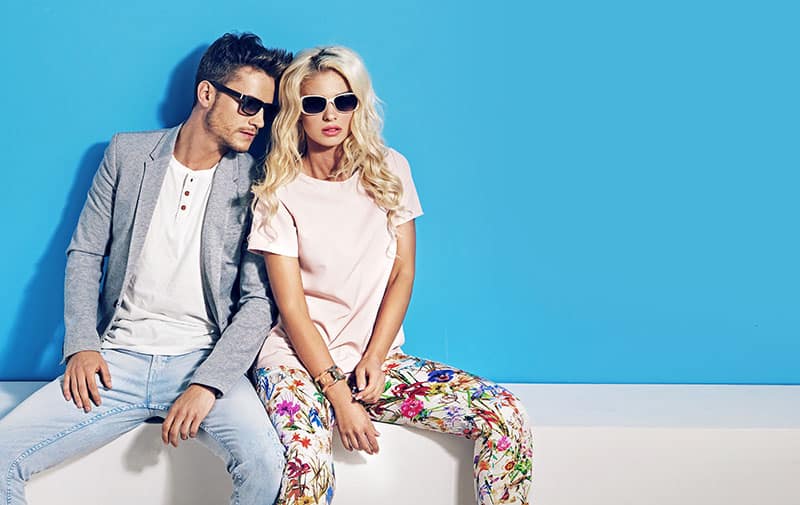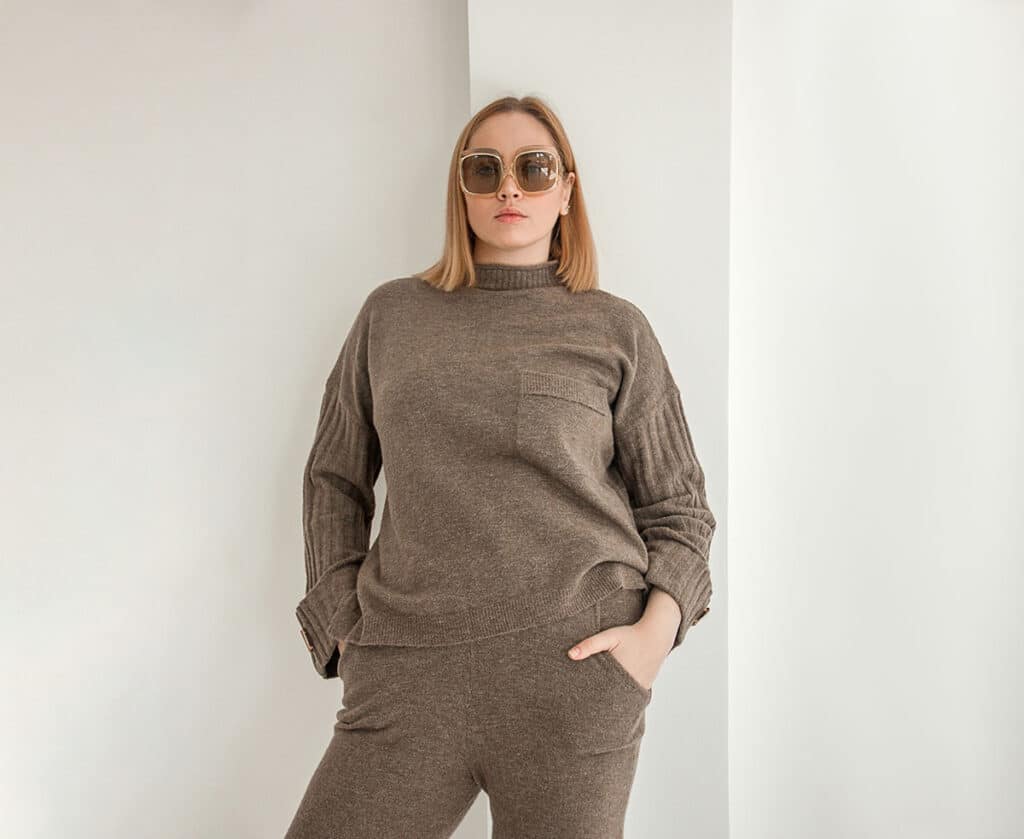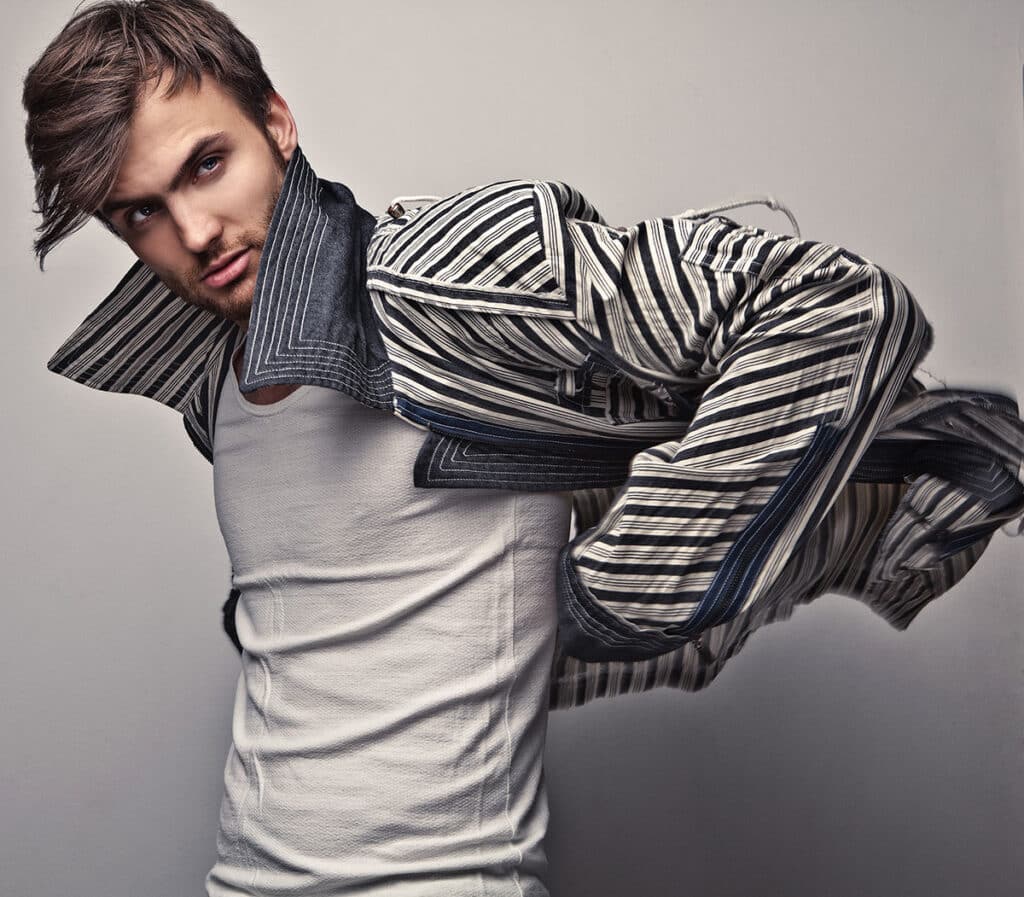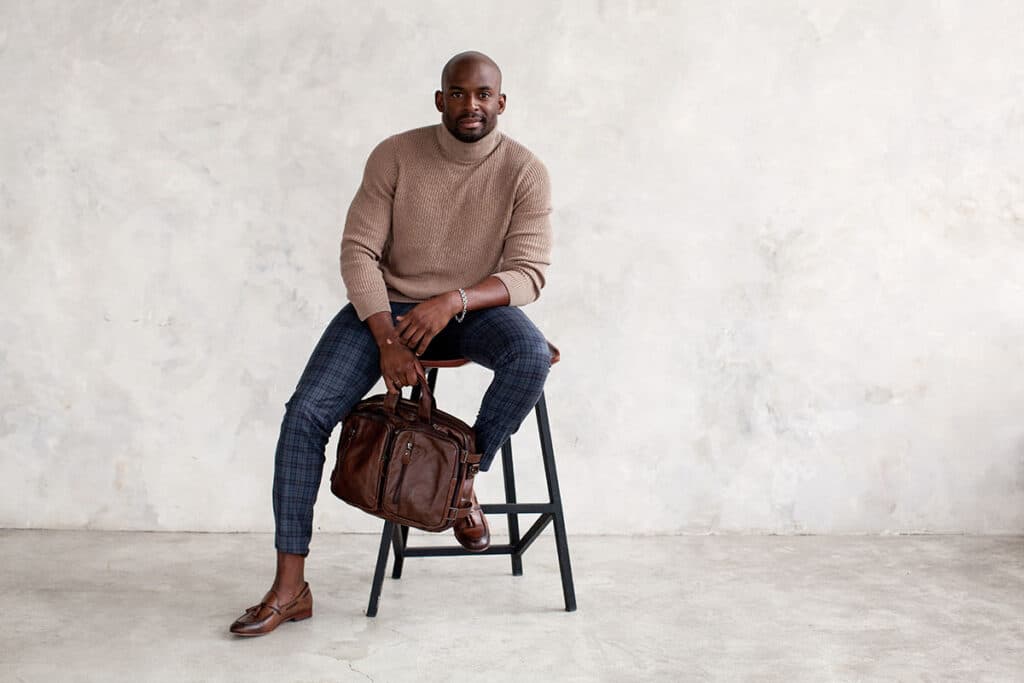How to Become a Fashion Model: 12 Pro Tips for Becoming a Model
2 Comments • Uncategorized • By Melissa

So many young people want tips on becoming a model because it’s one of the most competitive and tricky industries to break into. Fashion modelling is not as glamorous as it may first appear; it requires a lot of hard work, perseverance, dedication, tenacity and luck to make it to the big time.
To become a professional fashion model, it’s essential to understand the requirements of the job.
What is a Fashion Model?
A model is someone who works with designers and brands to advertise certain products. Models are required in all sectors including fashion, health & beauty, jewellery and travel – and even those you may not think about, such as automotive.
A fashion model is a model who works exclusively in fashion. They will be hired by an array of different brands to show off their clothing lines, walk in their runway shows, feature in magazine spreads and basically influence the public to buy the products.

8 Types of Fashion Models
There are many different types of modelling:
High-Fashion Models
These types of models work in high fashion and are usually the models you see walking in runway shows. These models – who are usually the type to make it to supermodel status – are typically the ones seen on the front of magazines. They may feature in editorials and can often be “the face” of a brand. High fashion is very difficult to get into as there are strict requirements around height and clothing size. It is known to be the most restrictive and exclusive types of modelling.
Catalogue/Commercial Models
Catalogue models also regularly find success. They tend to work for high-street brands. While they make not make quite as much money as high-fashion models, and they may not reach the same levels of fame, catalogue modelling has a much more relaxed policy around its requirements and they are much more inclusive and diverse in the types of people they work with.
Plus-Size Modelling
A fairly new sector of modelling is plus-size. It’s grown in popularity over the last few decades as the demand for plus-size fashion (and influencers) has grown. We are starting to see more and more plus-size models in catalogue modelling, however there is still some way to go before we start to see “plus-size” models in high fashion. While high fashion has been known to hire those bigger than their usual requirement, they deem plus-size to be anything over a UK size 8.
Fitness Modelling
Fitness modelling has become increasingly popular in recent years. We’ve seen a huge growth in fitness influencers on social media platforms like Instagram and TikTok, and this in turn has meant that fitness brands have started to work with more fitness models, rather than sports figures.

Parts Modelling
Parts models are models who work with a specific part of their bodies. For example, a foot model will work exclusively with their feet. They can be paid thousands of pounds to feature their selected body part, and many body parts models choose to insure their body part. Requirements are incredibly strict; you will need a “perfect” form of whichever body part you want to model. That means no scars or marks and perfectly even skin. Looking after your body part can be a 24/7 job; hand models are known to go to extreme lengths to avoid sun damage and wrinkles on their hands. Parts modelling inevitably requires extreme close-ups, so casting directors really are looking for as close to perfection as they can find!
Glamour Modelling
Glamour models are typically hired due to their sex appeal. They can be hired to feature in calendars, in magazines, and for certain fashion brands. Glamour models are usually hired with a male audience in mind.
Lingerie Modelling
Lingerie models can be found in both high-fashion and commercial modelling. High-fashion lingerie models – like those who used to feature on the Victoria’s Secret runway – typically have a very difficult-to-achieve body type. Commercial lingerie models are usually more realistic and are often hired to advertise lingerie for underwear brands whose audience is more general.
Swimsuit Modelling
Like lingerie modelling, swimsuit models can be hired for high-fashion and commercial purposes. The Sports Illustrated magazine is a very popular publication that regularly features up-and-coming models on the front page in swimwear. Tyra Banks shot to fame after appearing on its cover, and she has recently replicated it.

What Does it Take to Be a Fashion Model?
Skills & Knowledge
You need to have a fair bit of skill and a certain amount of knowledge if you want to make it in the world of modelling. Skill can be learnt, but often comes naturally – knowing how to find your light, and how to position your face and body to make them look amazing, is crucial.
You should also try to learn about business. While this may not seem relevant at first, you’ll soon discover that the more you know about business, the more informed you will be to make educated decisions about your career. Contracts are regularly used in modelling, and you will want to know as much as you can about modelling rights and regulations so you can protect yourself from scams and immoral employers and so you fully understand your rights as a worker in this space.
You should also try to learn as much about fashion as possible. Know your brands, and who owns/runs them. Recognise certain styles and the costs of garments. Know your fabrics, and how to dress to suit your figure.
Physical Appearance
Obviously, looks do have a lot to do with fashion modelling. But you may be surprised to learn that there is no set formula. While trends do indeed come and go (and your physical appearance fitting into these moulds at the right time will undoubtedly give you an edge), modelling agencies are always on the lookout for models who look different – not the same. They don’t want two models who look identical in their books. They want to be able to provide their clients with a range of possibilities.
Personality, attitude and photographability will all be taken into account, as well as style and posture. For a better chance of success, work hard on your health and fitness. Eat well and exercise regularly to maintain a proportional frame. Height is always a bonus and you will need to be over 5’8” if you want to work in high fashion. Don’t forget that commercial and other forms of modelling have much less strict requirements, so you don’t have to discount yourself if you’re short. Practice good hygiene, invest in a good skincare routine, wear SPF, and moisturise your whole body regularly. You should also make sure to visit the dentist regularly; while you don’t need perfectly straight teeth, teeth that aren’t white or that look unhealthy will very likely count against you.

Strong Work Ethic
Modelling isn’t easy work. Days can be extremely long, and many models run on little sleep, particularly when working large shows that span weeks at a time (like Paris Fashion Week).
You’ll have to be happy being away from home a lot as modelling can require a lot of travelling. You’ll have to maintain a strict diet and exercise routine, even when travelling and on holiday.
You may have to miss out on social engagements to attend go-sees. When starting out, you will likely work a full-time job and model on the side – that means weekends will be taken up with modelling obligations. You will also have to track your own tax to begin with as you will be considered a freelancer. You won’t make much money to begin with – in fact, you may complete jobs for no money at all, purely to gain experience.
Restrictions
There are a few restrictions you may not have thought about if you want to become a model.
Firstly, you’ll have to be wary of what you say on social media. If you intend to work in the public domain, there is a likelihood that you may become a recognisable public figure. You don’t want silly mistakes made in your youth to haunt your future career, so steer clear of posting strong opinions on social media – even if you don’t plan on having that as your public-facing platform.
Speaking of social media, you will want to utilise this free tool to help your career flourish. Focus on posting regular high-quality images with engaging comments, and build up a following – you may even attract work through this.
Unfortunately, modelling is heavily reliant on how you look, and there are some who will find themselves on the back foot. This doesn’t mean you won’t find success as a model, but it may mean you face a harder road ahead that may include discrimination. The modelling industry is well-known for its lack of diversity and, while that’s changing, it’s still not where it should be. You’ll need to have a strong understanding of your rights, as well as a thick skin and confidence that is hard to knock. You’ll also need to take care of your mental health and know when it’s time to step away and protect yourself.
Salary and Working Hours
It’s difficult to say outright how much a model may earn. Famous supermodel Linda Evangelista once famously said, “We don’t wake up for less than $10,000 a day.” However, it’s safe to say that she and her ’90s associates were the exceptions, not the norm!
When you’re just starting out, you can expect to earn very little per shoot. You may even want to consider the odd unpaid opportunity for experience and to help build your modelling portfolio.
As your experience progresses, you’ll find yourself able to earn more money. The more established you are, the more influence you have, and the more you can earn. That’s why the most recognisable models in the world are able to charge millions of pounds because they have the influence to drive millions of pounds worth of sales for their clients.
Before you charge a client, think about how much influence you yourself have. This will have an effect on the amount you can charge.
It’s always worth doing regular research on what others in the industry are earning. You don’t want to undersell yourself, but similarly, you don’t want to overcharge and scare a potential customer away.
If you’re signed to a modelling agency, they will sort all this out for you. They will take a cut of your pay, but they will also provide you with plenty of opportunities to land jobs, so you should receive more of a consistent income if you regularly land work. As you grow in experience and become more in demand, you will see your pay increase.
Your niche will also affect how much you earn. If you specialise in something only a select few people can provide, you may find yourself able to charge more. High fashion models can earn the most, though even they can find themselves underpaid at fashion shows; many models claim to have been paid in clothing walking some of the biggest shows in the world.
The way to make good, consistent money is to find consistent work, work hard, be reliable, flexible, and above all, consistent in the quality of your work. After all, you’re only as good as your last photo!

How to Become a Fashion Model
Establish your strengths (and work on your weaknesses)
To become a model, you need to figure out what you’re good – and not so good – at. Are you great at close-up beauty shots? Are you amazing at posing? Are you better at outside photography, or do you shine in studio settings? Find out what you’re not so great at – and practice, practice, practice.
Work out which type/style of modelling suits you best
As explained above, there are many different niches and you might not be suitable for all of them. There’s likely one that you’ll suit the most – and this is the one in which you’re more likely to reach success. Figure out which niche is best for you, and apply to modelling agencies who work with this type of model.
Understand the job
You need to research the industry to understand the job at hand. Modelling is so much more than turning up and looking pretty; there are a lot of rules and work politics to understand. Arm yourself with knowledge.
Look after your appearance
Modelling is all about your looks – so take care of them!
Gain experience (and be willing to volunteer – at least initially)
The more experience you have, the better. Try to gain as much experience as possible when first starting out. You can even volunteer for university projects, or look for photographers on the lookout for models. Collaborate with others who need experience (and make sure you agree beforehand that any photos taken of you can be used in your own marketing, for example on your modelling website, and in your portfolio).
Create a strong portfolio
Speaking of your portfolio! This tool will be the most important tool throughout your modelling career – so make sure it’s good. Your portfolio should be regularly updated and should only include your absolute best modelling photos. Think of it like your CV; it should showcase your experience and potential, and convince brands to work with you.

Get signed to a modelling agency (or freelance by applying direct)
Getting signed by a modelling agency will really help. An agency will give you a level of protection while also finding you potential jobs. They will take a cut of your pay, but this is usually ultimately worth it as many models would fail to make an impact on the modelling world without the backing of a known agency. Nearly all brands will go through a modelling agency to find models to work with, so getting signed will give you the exposure you need to find work.
To get signed to an agency, simply look online for their application form. Use your absolute best modelling photos and make sure to fill out the information accurately. If you don’t hear back, don’t panic too much – they receive hundreds of applications each week. Make a not to reapply in 6 month’s time – and don’t give up! Remember, you can apply to as many agencies as you want, as many times as you want.
You should also follow your favourite modelling agencies on social media; you never know when they might do an open casting call.
Attend casting calls
Casting calls are like interviews. You have to get invited (that’s where the modelling agency comes in), but sometimes an agency may put an advertisement out for an open casting call. That’s when anyone can attend.
Utilise social media
Social media is a free tool and is great for marketing yourself. It’s hard work, especially now that algorithms make it more difficult for new starters to get noticed. But with perseverance and consistency, you should see your follower number go up. You never know if you may attract the work of a brand, or even a modelling agency – lots of models are now scouted this way.
Market yourself
Marketing yourself is ultimately the best way to get noticed and recognised in the industry. That’s why understanding business and marketing on a more general scale will really help with your understanding of how the industry works. Take a look at your favourite models and find out how they succeeded for inspiration.

What a Model Does Day-to-Day
Models don’t have it easy; they have to work extremely hard. Most days include some form of workout, and models are regularly on the go as they rush to meetings, casting calls and photo shoots.
Models tend to rise early and either meditate, journal or work out. They always have breakfast – usually protein-packed – to fuel their day, typically accompanied by coffee or lemon water.
Once they’ve showered and gotten ready, they’ll set off to attend the casting calls and photoshoots they have lined up. They may spend time online answering emails and arranging schedules, depending on how in demand they are.
Once they’ve arrived at their destination, they may have to wait for a period of time to be seen if attending an interview. At photoshoots, they will be rushed into hair and make-up. At large fashion shows, a model may have to have their hair and make-up done up many times during the day; many models claim to suffer from poor skin during those weeks.
Depending on the amount of travel required and how many interviews/shoots they need to squeeze into a day, a working day for a model can end at any time. Shoots can range from an hour, to a full day, sometimes heading way into the evening.
If a model needs to return home after work, they may get back in the late evening. Food is a priority at this stage – many like to cook homemade meals to ensure they are getting the right amount of proteins and nutrients to meet their dietary requirements.
How to Find Opportunities
Modelling Courses and Apprenticeships – Are They Worth it?
You may have seen various modelling courses and apprenticeships advertised online when researching the job, but are they worth it?
This question is subject to debate. While many complete beginners see them as an excellent place to learn and gain experience, there is nothing you won’t learn while on the job. Courses can be great for building confidence, but they are expensive. Most will find they gain the same benefits from volunteering and researching the industry.
How to Find Modelling Jobs
The internet is the best place to find jobs nowadays, but signing to a modelling agency will alleviate the stress and time to find work.










Interested in Modelling
Interested in Modelling in India